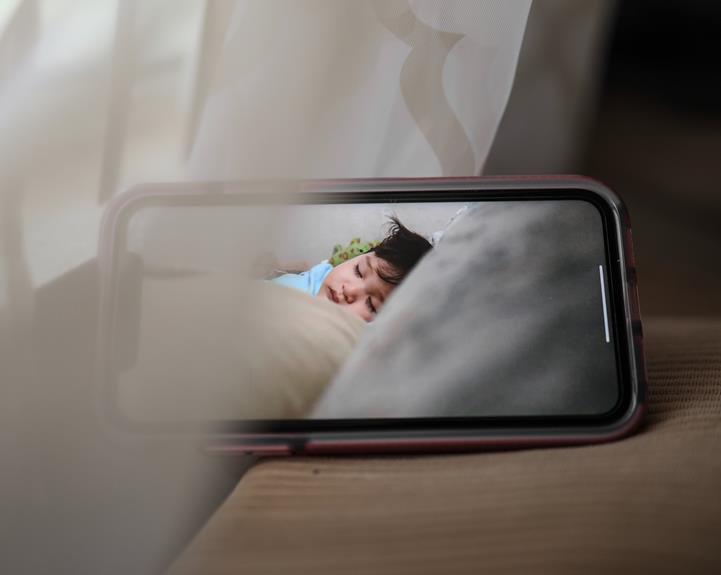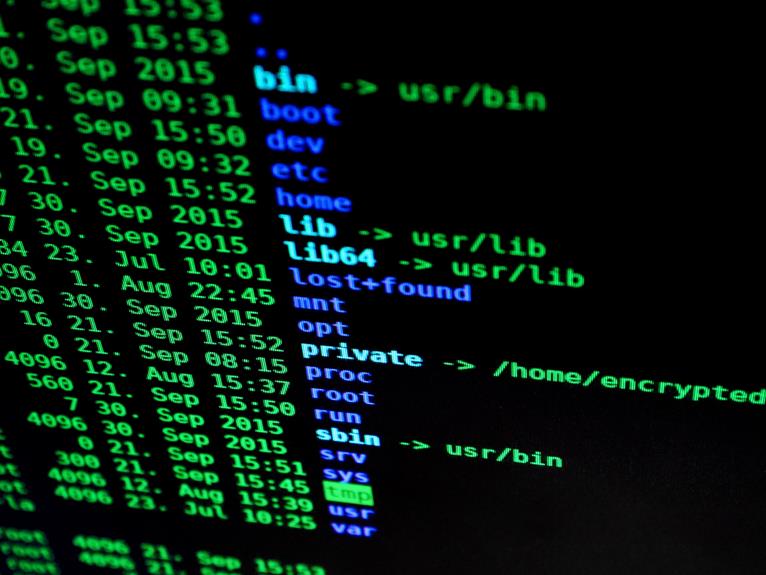Do You Need a Baby Monitor

In the fast-paced world of parenting, where every decision seems to carry immense weight, the question of whether or not to invest in a baby monitor is one that often arises.
The debate surrounding this seemingly simple device is multifaceted, encompassing concerns of safety, sleep patterns, and convenience.
While some argue that a baby monitor is an essential tool for ensuring the well-being of their little one, others question its necessity in today's modern age.
As we delve into the various aspects of this debate, we will explore the reasons why a baby monitor may or may not be a valuable addition to your parenting toolkit.
Safety and Security
When it comes to ensuring the safety and security of your baby, baby monitors play a crucial role in providing peace of mind for parents. These devices are designed to allow parents to keep a close eye on their infants, even when they are not physically present in the same room.
Baby monitors typically consist of a camera that captures live video footage of the baby's surroundings, which is then transmitted to a handheld monitor or a smartphone app. This allows parents to monitor their baby's activities, sleep patterns, and overall well-being.
In terms of safety, baby monitors provide parents with the ability to quickly respond to any potential dangers or emergencies. For example, if a baby monitor detects unusual movement or sounds, such as crying or gasping, parents can immediately check on their baby and take appropriate action. Moreover, some baby monitors are equipped with temperature sensors, which alert parents if the baby's room becomes too hot or too cold.
From a security perspective, baby monitors offer parents peace of mind by allowing them to keep a close watch on their baby at all times. With the advancement of technology, many baby monitors now come with encrypted video feeds, ensuring that the footage remains secure and private. Additionally, some models offer features such as two-way audio communication, allowing parents to soothe their baby without physically being present in the room.
Peace of Mind
Baby monitors provide parents with a sense of peace and reassurance, knowing that they can always keep a watchful eye on their baby's well-being. In today's fast-paced world, parents often find themselves juggling multiple responsibilities and tasks. This can lead to a constant worry about their baby's safety and security, especially when they are not physically present in the same room. Baby monitors offer a solution to this concern by allowing parents to remotely monitor their baby's activities and environment.
Here are four key reasons why baby monitors provide peace of mind for parents:
- Real-time monitoring: With a baby monitor, parents can have a live video and audio feed of their baby's room, enabling them to see and hear their baby's every move. This provides immediate reassurance and enables parents to respond promptly to any potential issues.
- Sleep monitoring: Some baby monitors come with sleep tracking features, allowing parents to monitor their baby's sleep patterns and identify any disturbances or irregularities. This can help parents address sleep-related concerns and ensure their baby is getting the rest they need.
- Temperature and humidity monitoring: Baby monitors equipped with temperature and humidity sensors can alert parents if the room conditions are not optimal for their baby's comfort and well-being. This feature ensures that the baby's environment is always safe and conducive to sleep and play.
- Two-way communication: Many baby monitors come with built-in two-way communication, enabling parents to soothe their baby or talk to them from another room. This feature provides comfort and reassurance to both the baby and the parent, fostering a strong sense of connection and security.
Monitoring Sleep Patterns
Monitoring sleep patterns is an essential aspect of using baby monitors as it allows parents to track their baby's sleep quality and make informed decisions regarding their well-being. Sleep is crucial for a baby's growth, development, and overall health. With a baby monitor that offers sleep monitoring features, parents can gain valuable insights into their baby's sleep patterns, such as duration, quality, and any disturbances.
By monitoring sleep patterns, parents can identify if their baby is getting enough sleep or if there are any disruptions that may be affecting their sleep quality. This information can help parents adjust their baby's sleeping environment, bedtime routines, or feeding schedules to improve sleep quality and promote healthy sleep habits.
Moreover, monitoring sleep patterns can also aid in identifying any potential sleep disorders or medical conditions that may be impacting the baby's sleep. For instance, if a baby consistently experiences frequent awakenings or restless sleep, it may indicate the need for further medical evaluation.
Baby monitors with sleep monitoring features can provide detailed reports and analytics, allowing parents to track their baby's sleep patterns over time. This data can be useful when discussing sleep concerns with healthcare professionals, as it provides objective information about the baby's sleep habits.
Communication and Convenience
After gaining valuable insights into their baby's sleep patterns, parents can then appreciate the communication and convenience features offered by modern baby monitors. These features provide peace of mind and allow parents to attend to other tasks while staying connected to their little one.
Here are some key communication and convenience features of baby monitors:
- Two-way communication: Many baby monitors allow parents to talk to their baby through the monitor. This feature is especially useful for calming a restless baby or providing reassurance when the parent is not in the same room.
- Mobile app integration: Some baby monitors come with a mobile app that allows parents to monitor their baby remotely. This feature is convenient for parents who are not at home but still want to keep an eye on their baby.
- Temperature and humidity sensors: Baby monitors with built-in sensors can alert parents if the temperature or humidity levels in the baby's room are outside the recommended range. This ensures a comfortable and safe environment for the baby.
- Lullabies and white noise: Many baby monitors have pre-programmed lullabies and white noise options to help soothe the baby to sleep. These sounds can be controlled remotely, allowing parents to adjust the volume and type of sound without entering the room.
These communication and convenience features make modern baby monitors an essential tool for parents who desire freedom and peace of mind while caring for their little one.
Transitioning to Independent Sleep
During the early stages of a baby's development, establishing a routine and creating a conducive sleep environment are crucial steps in transitioning to independent sleep.
As babies grow, it becomes important to encourage self-soothing and independent sleep habits, allowing them to develop the skills necessary for uninterrupted sleep.
Implementing a consistent bedtime routine helps signal to the baby that it is time to sleep, making the transition smoother. This routine can include activities such as a warm bath, reading a book, and gentle rocking or singing.
Creating a sleep-friendly environment involves ensuring the room is dark, quiet, and at a comfortable temperature. Using blackout curtains, white noise machines, and maintaining a consistent room temperature can aid in promoting quality sleep. It is also important to provide a safe sleeping space, such as a crib or bassinet, with a firm mattress and no loose bedding.
Gradually reducing sleep associations, such as pacifiers or sleep aids, can help babies learn to fall asleep independently. While this transition may take time and patience, it is a necessary step towards fostering independent sleep and promoting healthy sleep habits in babies.
Frequently Asked Questions
How Far Is the Range of a Typical Baby Monitor?
The range of a typical baby monitor varies, but it usually extends between 500 to 1000 feet. This allows parents or caregivers to monitor their baby from different areas of the home, providing them with peace of mind and convenience.
Can a Baby Monitor Detect a Baby's Breathing Patterns?
Yes, a baby monitor can be equipped with sensors to detect a baby's breathing patterns. This feature provides added peace of mind for parents, ensuring that they can monitor their baby's well-being even when not in the same room.
Are There Any Privacy Concerns With Using a Baby Monitor?
Privacy concerns may arise when using a baby monitor, as it can potentially be hacked or accessed by unauthorized individuals, compromising the safety and security of the child and the family. It is important to take precautions and choose secure, encrypted devices.
Can a Baby Monitor Be Used for Multiple Children in Different Rooms?
A baby monitor can be used for multiple children in different rooms, allowing parents to have peace of mind and freedom to attend to other tasks while keeping an eye on their little ones.
What Are the Main Features to Consider When Choosing a Baby Monitor?
When choosing a baby monitor, it is important to consider features such as video quality, range, battery life, sound activation, and additional functionalities like temperature monitoring and two-way communication.
Conclusion
In conclusion, a baby monitor offers numerous benefits, including safety and security, peace of mind for parents, monitoring sleep patterns, and communication and convenience.
With its ability to provide real-time information and alerts, it serves as a valuable tool for parents in ensuring the well-being of their infants.
Transitioning to independent sleep becomes easier with the assistance of a baby monitor, allowing both parents and babies to rest easy.
Overall, investing in a baby monitor is a wise choice for any parent seeking enhanced monitoring and care for their child.




